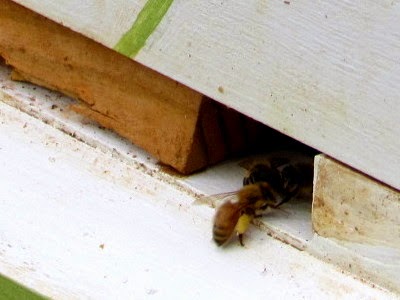| Online: | |
| Visits: | |
| Stories: |
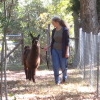
| Story Views | |
| Now: | |
| Last Hour: | |
| Last 24 Hours: | |
| Total: | |
First Hive Check
My honeybees were installed last Saturday. After several days it is recommended to check on the queen, to see if she has been released from her cage. Since we had a forecast for deluge all week I took advantage of the first break in the weather to take a look. No photos of this and I'm sorry for that, because the whole thing is so interesting. Right now I'm doing this solo because Dan's at work, and a camera at this stage of my beekeeping experience would be in the way. In the caption to the photo below, I give a brief description of what's what, so hopefully my description makes sense.
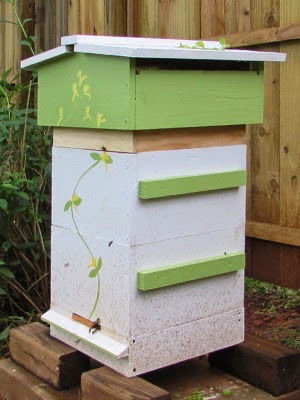 |
| Green box is the roof, the unpainted part is the feeder. On top of the feeder is the quilt box, hidden from view by the roof section. 2 hive boxes are used at first. The queen cage was put on the topbars of the bottom box; bees were dumped on top |
I removed the roof, quilt, and feeder. I was amazed at how much comb had already been built. It all appeared to be following the topbars, which is indeed a good thing, because Warré hived bees are notorious for building comb every whichaway. Next I removed the top hive box and gently set it aside.
I found the queen cage where I'd placed it, but under a pile of bees. I poofed the bees away with my bee smoker and discovered that the queen was still in her cage. It had only been a couple of days so I could have left her in longer, but considering the weather I decided to release her. Opinions vary on how long to give the bees to get her out, but most agree that if she's been with them for at least two days she will usually be accepted.
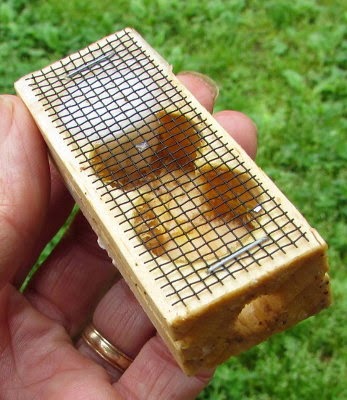 |
| Now empty queen cage. The white in the top compartment is candy. If you look closely, you can see where I'd poked a hole through it. The hole at the cage bottom was where I let her out. |
The queen cage has two openings, one filled with candy, through which the bees work to release her. There is also a corked opening on the other end in case a direct release is needed. I removed the cork, set the cage back down, and she walked right out.
After removing the now empty queen cage I reassembled the hive, topped off the feeder, and left the bees to get on with their bee business. As soon as I got back into the house it began to pour!
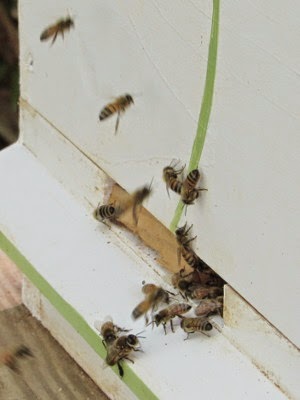 |
| A small block of wood was used to narrow the hive opening by about two-thirds. This helps the new colony better defend the hive from robbers & the like. |
The thing to watch for was pollen being brought in. Pollen is the bees' source of protein and is fed to baby bees (larvae). It is mixed with nectar and bee secretions in what is known as “bee bread.” If the bees are bringing in a good amount, it means the queen is present and laying.
I'm not yet sure what a “good amount” is, so I still experience a lot of concern as to whether everything is going well. There was only a trickle at first, but I've noticed that pollen deliveries have increased quite a bit as the days pass, so I'm taking that as a good sign!
Source: http://www.5acresandadream.com/2015/04/first-hive-check.html




